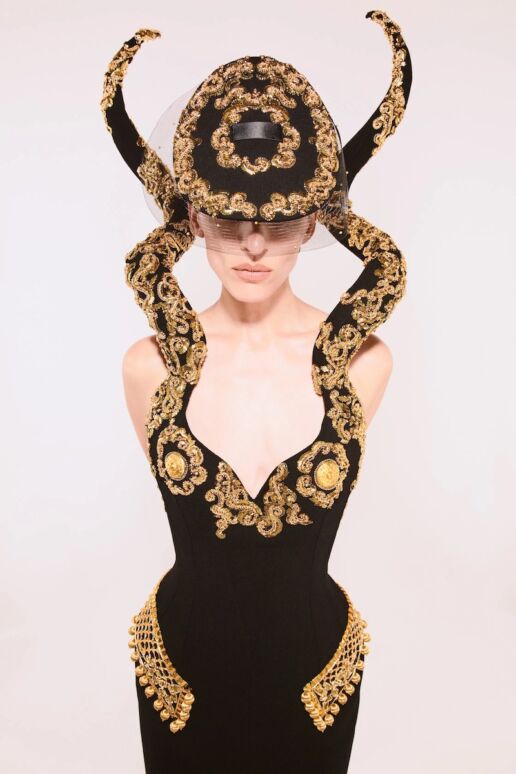Schiaparelli – Designs beyond reality and time
Elsa Schiaparelli - A rebellious spirit who combined fashion with art almost a century ago and invariably surprised her followers with her designs from the start to the end of her career. A genius who managed to become one of the biggest names in fashion between two World Wars.#Sanayi313Pioneers
Imagine being born in a Palazzo in Rome in the late 1800s and living in Paris in the early 1920s, surrounded by countless artists in Europe. You are a fashion designer and even Gabriel Chanel is making jealous statements about you in the newspapers. You build on your reputation further when celebrity designer Chanel refers to you as ‘that Italian artist who makes clothes.’ Actually, this remark is befitting because you are a person who uses fashion as a tool for making art and do not regard yourself as a fashion designer. Because the only thing that matters to you is to create designs that push the limits of your imagination and the perception of reality.
What it takes to become famous in the fashion industry today was actually not that different in the 1920s and 30s Europe. Being talented, having an eye for quality fabrics and a good understanding of the trade alone was not enough to earn a mass following. Ample amounts of indifference, courage, cunning, ruthlessness, and smugness were equally as necessary. This was a formula effortlessly concocted by the designer, whose secrets of success will be disclosed further on… An adventure that started in the 20s, when everyone with a passion to change the world was flocking to Paris – this is Schiaparelli’s story. Being in Paris meant that her aesthetic perception was nourished by a city full of writers, painters, poets and sculptors full of outlandish ideas. The parties, aristocratic guests, and oil paintings with bright gold frames in the house where she grew up undoubtedly also contributed to her aesthetic understanding. Thus, it comes as no surprise that the first sweater she designed as a newcomer on the fashion scene in 1927 was themed ‘trompe l’œil’, instantly gaining international acclaim. She became the first female designer to be featured on the cover of Time magazine just seven years after this sweater hit the market. In the meantime, she succeeded in releasing her first perfume, designed a necklace with Russian-French artist Elsa Triolet, and embarked on creating surrealist hat designs. In 1935, Elsa moved her boutique to the five-storey, 98-roomed Hôtel de Fontpertuis in Place Vendôme, at the heart of Paris, where she collaborated with interior architect Jean-Michel Frank, who had previously worked with her in designing perfume bottles, and legendary sculptor Alberto Giacometti. By combining art and fashion in a huge building on top of clothing meant that Schiaparelli was literally the first person to have a workshop and boutique under the same roof. Elsa’s passion for surrealism went beyond befriending surrealist designers. During her career, she collaborated with many artists such as Jean Cocteau, Salvador Dalí, Man Ray, and Meret Oppenheim. The powder box she designed with Salvador Dali in the form of the rotary dial of a pay phone is the first creation that went down in the history of fashion. Later, the Lobster Dress, the most iconic piece designed by the duo that featured their trademark genius, was worn by the Duchess of Windsor Wallis Simpson. In the ‘Stop, Look and Listen’ collection, the designer used newspaper clippings about herself as fabric patterns, reminding everyone that she would never stop pushing the limits of imagination. Even today, no one would disagree that she was cooler than the modern designers who have their names written on their clothes in large print. Her fascination with expensive fabrics, eye-catching colours, flamboyant forms, and bright embroidery led her to develop her collections around imposing themes. She created special collections inspired by circuses, horoscopes, and music. Her approach that was far beyond her time, even our own, made another appearance when she used the camouflage pattern for the first time in House Couture in the Cash & Carry collection she released during the Second World War. Elsa moved to America during World War II, but she had no trouble keeping up with the world reshaped by politics on her return to Paris in 1945. It was 70 years ago when she created the wardrobe sought after by all young professionals of the 21st century who seek elegance as much as they do comfort. Six dresses weighing less than six kilos in total, three folding hats and one reversible hat became the object of desire for all travelling women. Redefining innovative thinking and courage in the world of fashion, Schiaparelli also designed glasses and underwear. Elsa introduced her signature Shocking Pink colour and huge jewellery to the fashion scene before closing her Haute Couture boutique in 1954. The designer passed away in 1973 but her legacy was revived at the Hôtel de Fontpertuis in 2012 and still remains one of the most anticipated fashion events of the Paris Haute Couture week. Lady Gaga preferred a Schiaparelli design for her performance at Joe Biden’s inauguration ceremony last year, Bella Hadid appeared on the Cannes red carpet with a Schiaparelli necklace, Julia Fox and her ex-boyfriend Kanye West spent the Paris Fashion Week dressed in Schiaparelli Couture. Plus the fact that the brand’s 1930 collection was at least as impressive as the Autumn 2022 collection unquestionably proves that this woman who changed fashion history deserves respect at the highest level.
- A better understanding of Schiaparelli also requires a closer look at her designs. So, I urge the reader to take the time for a visual journey through the Schiaparelli archives.











